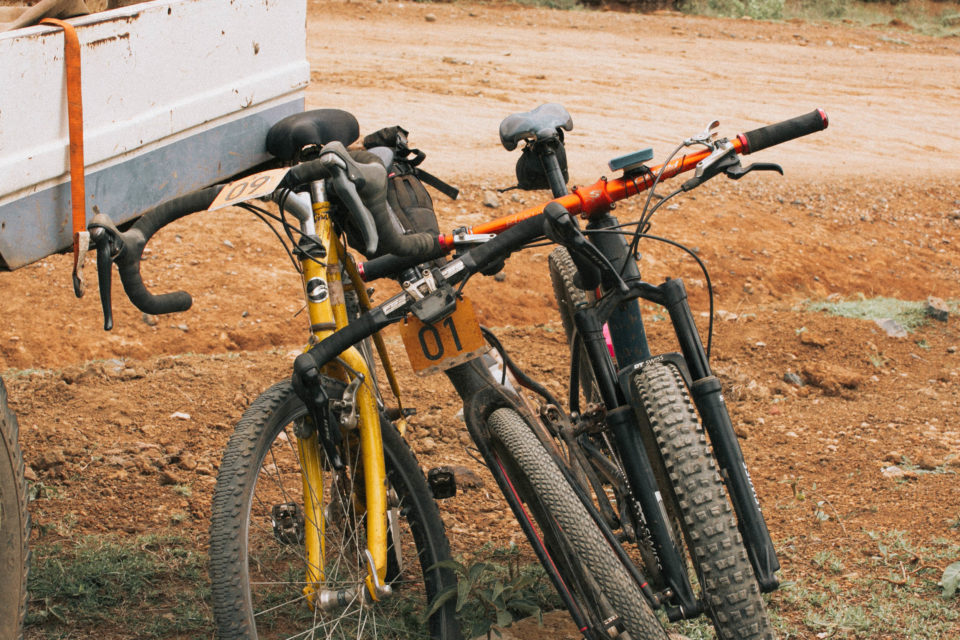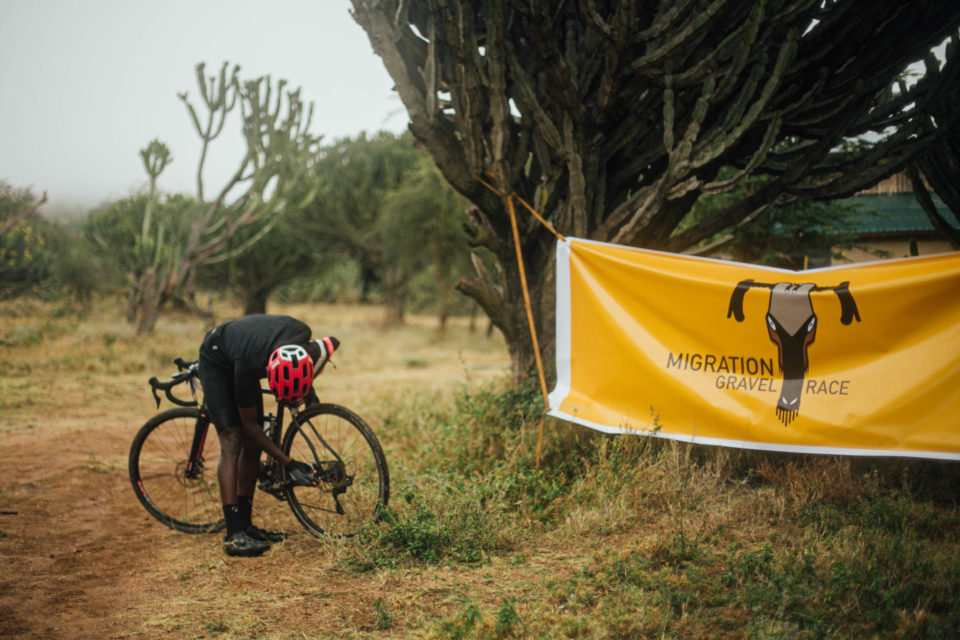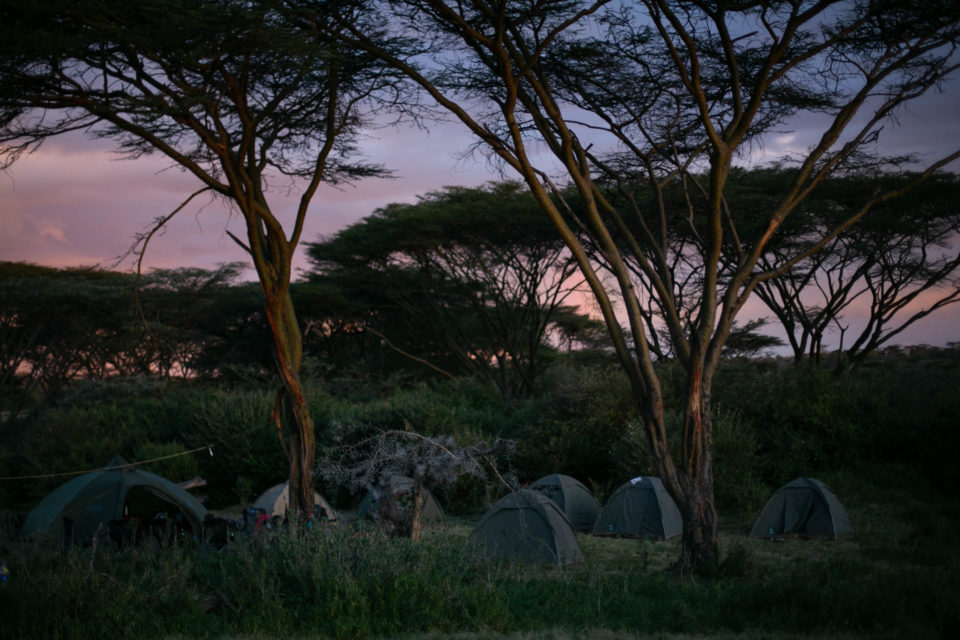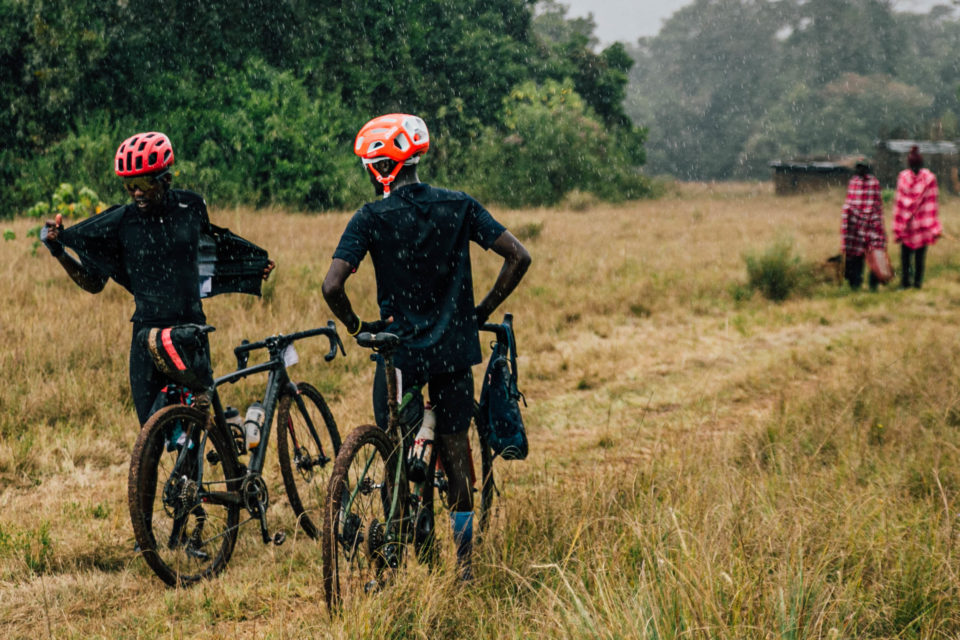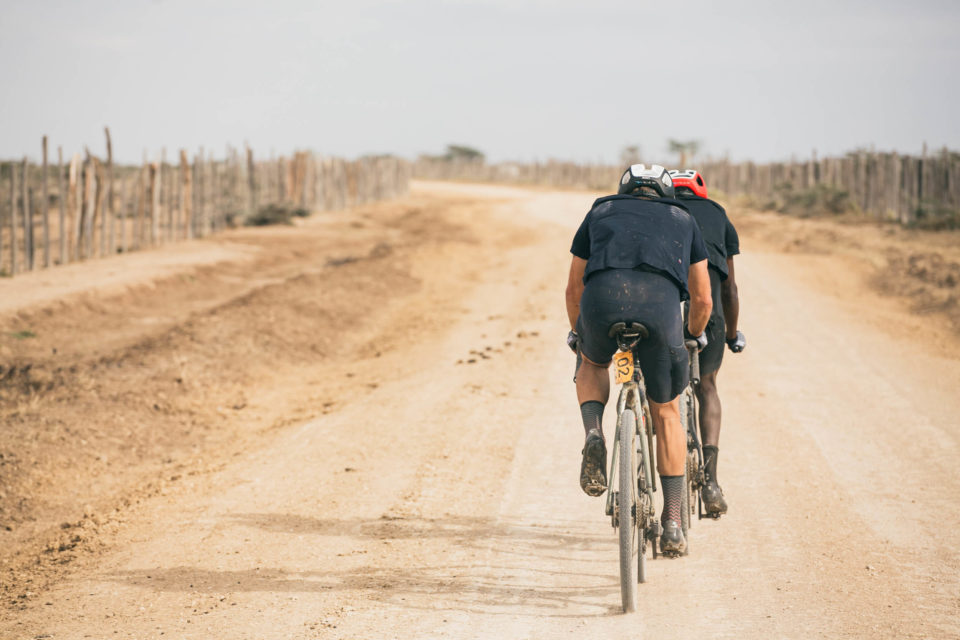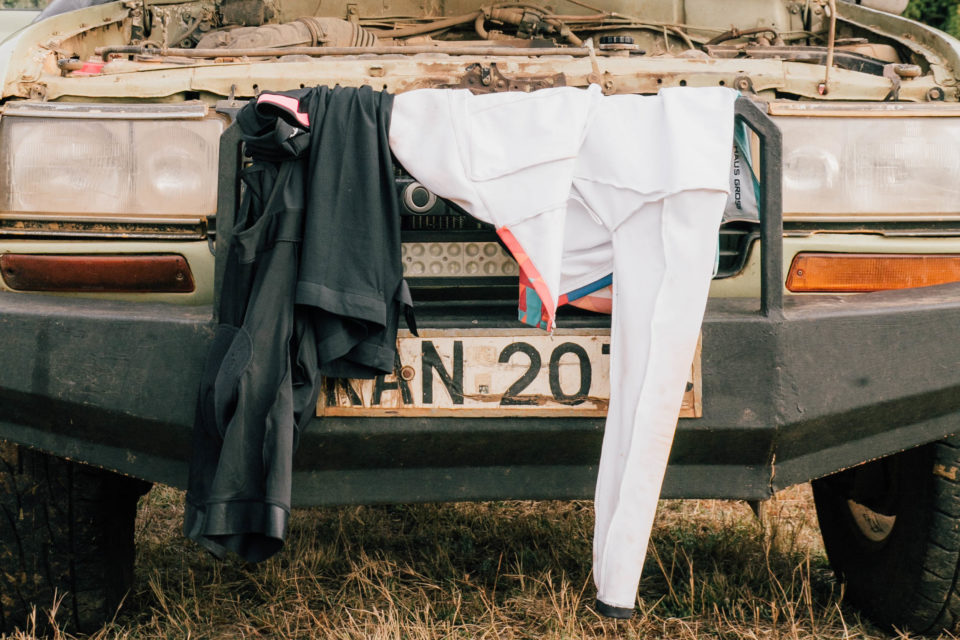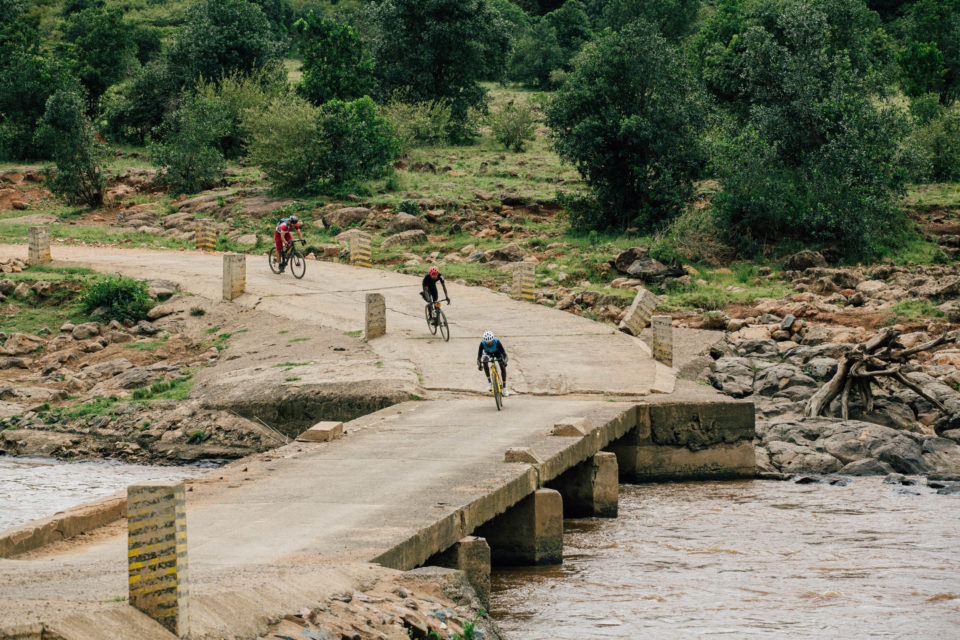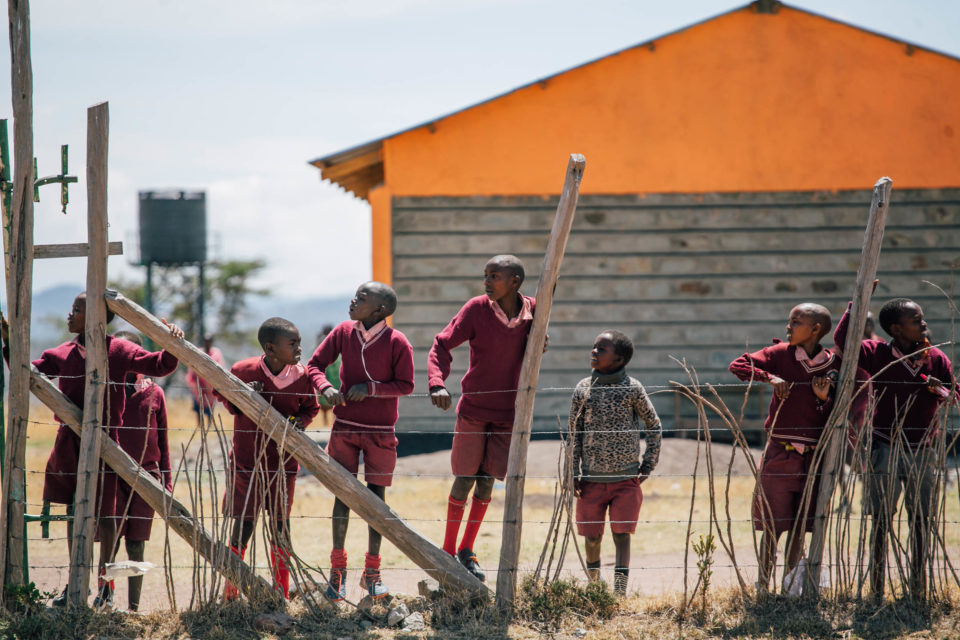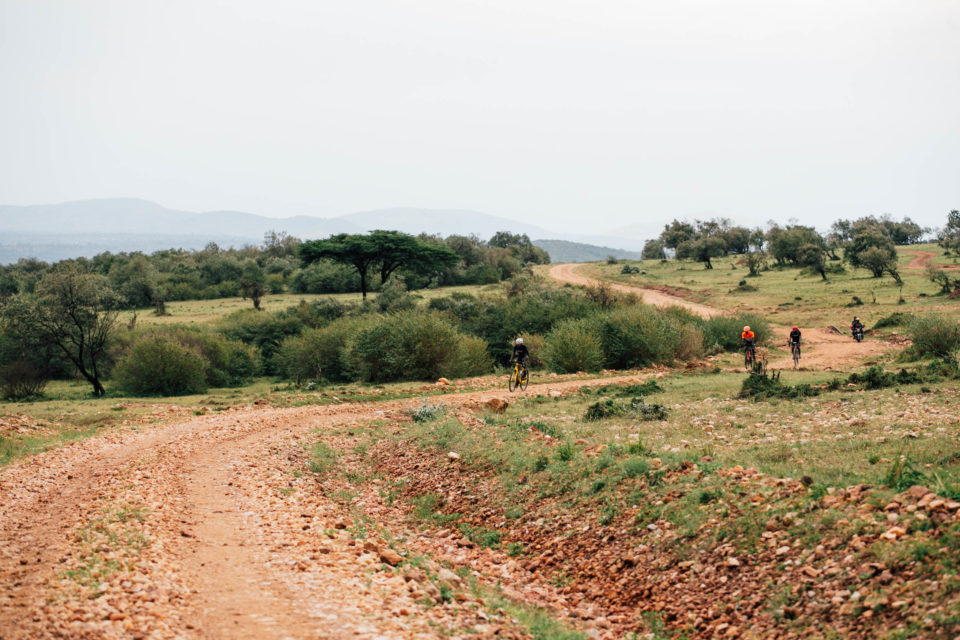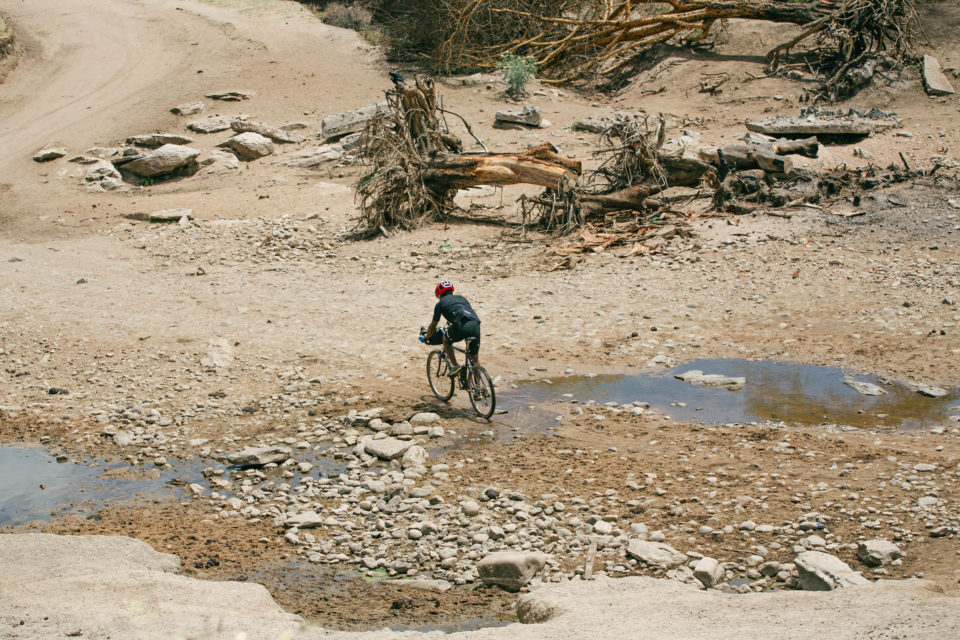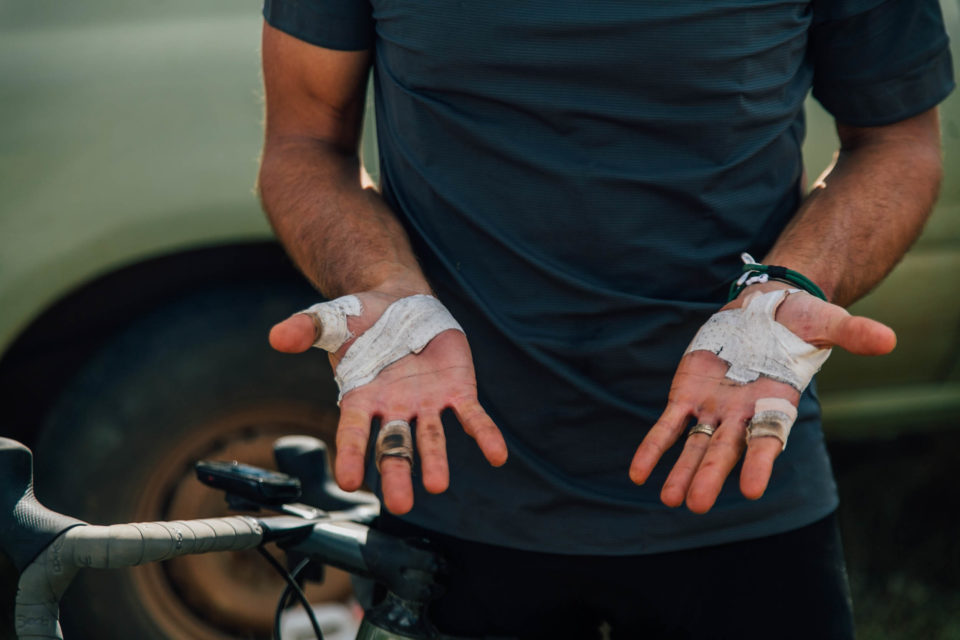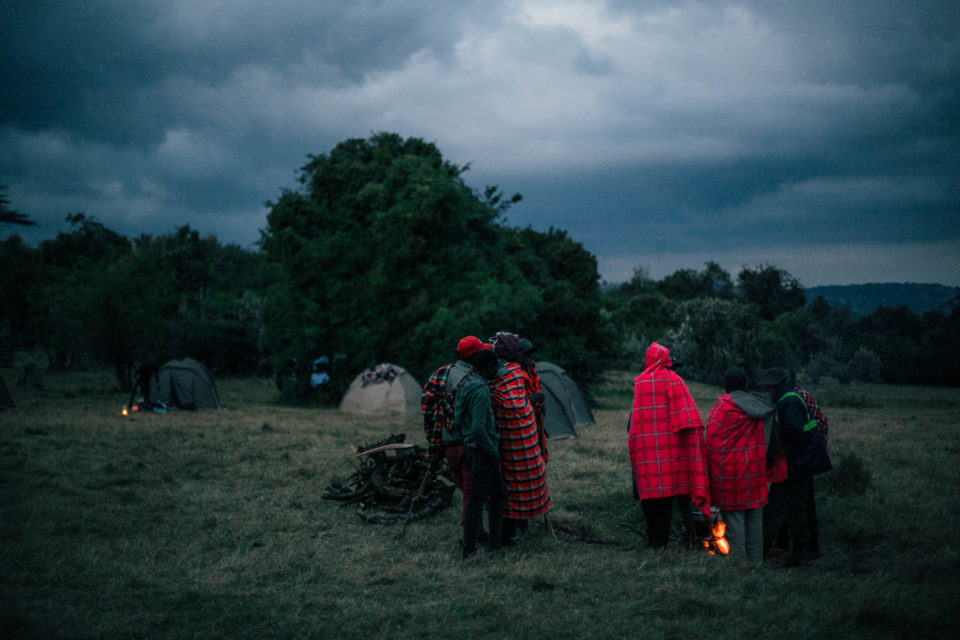Migration Gravel Race: Gravel Racing in East Africa
Share This
The inaugural Migration Gravel Race will take place in Kenya next year, and photographer Lian van Leeuwen traveled there to meet and ride with the organizers to learn more about the event and its mission. Find her interview with them here, plus a jaw-dropping set of photos shot along the 650km race route…
Words by Lian van Leeuwen, Mikel Delagrange, and Sule Kangangi, photos by Lian van Leeuwen
In the world of gravel racing, there is one continent that’s yet to have its turn in the spotlight. Apart from a few well-known off-road races in South Africa, the many pristine gravel roads of East African countries like Kenya, Rwanda, and Uganda are practically untouched by endurance racers, waiting to be ridden on 40mm rubber.
But in these regions, there’s more than just gravel biding its time to be included in the global cycling scene. A growing community of African cyclists is ready to show their strength on an international level. If you ask any of them what is holding them back, their answer is loud and clear: it’s the lack of opportunities to race against the best.
That’s where the Migration Gravel Race comes in. To learn more about the upcoming inaugural edition of the race, I sat down with Mikel Delagrange, a bike shop owner by passion and lawyer by profession, and Sule Kangangi, pro continental rider at BikeAid. They shared about their Team AMANI initiative and the upcoming Migration Gravel Race as ways to create more race opportunities for East African riders. Find the full conversation below.
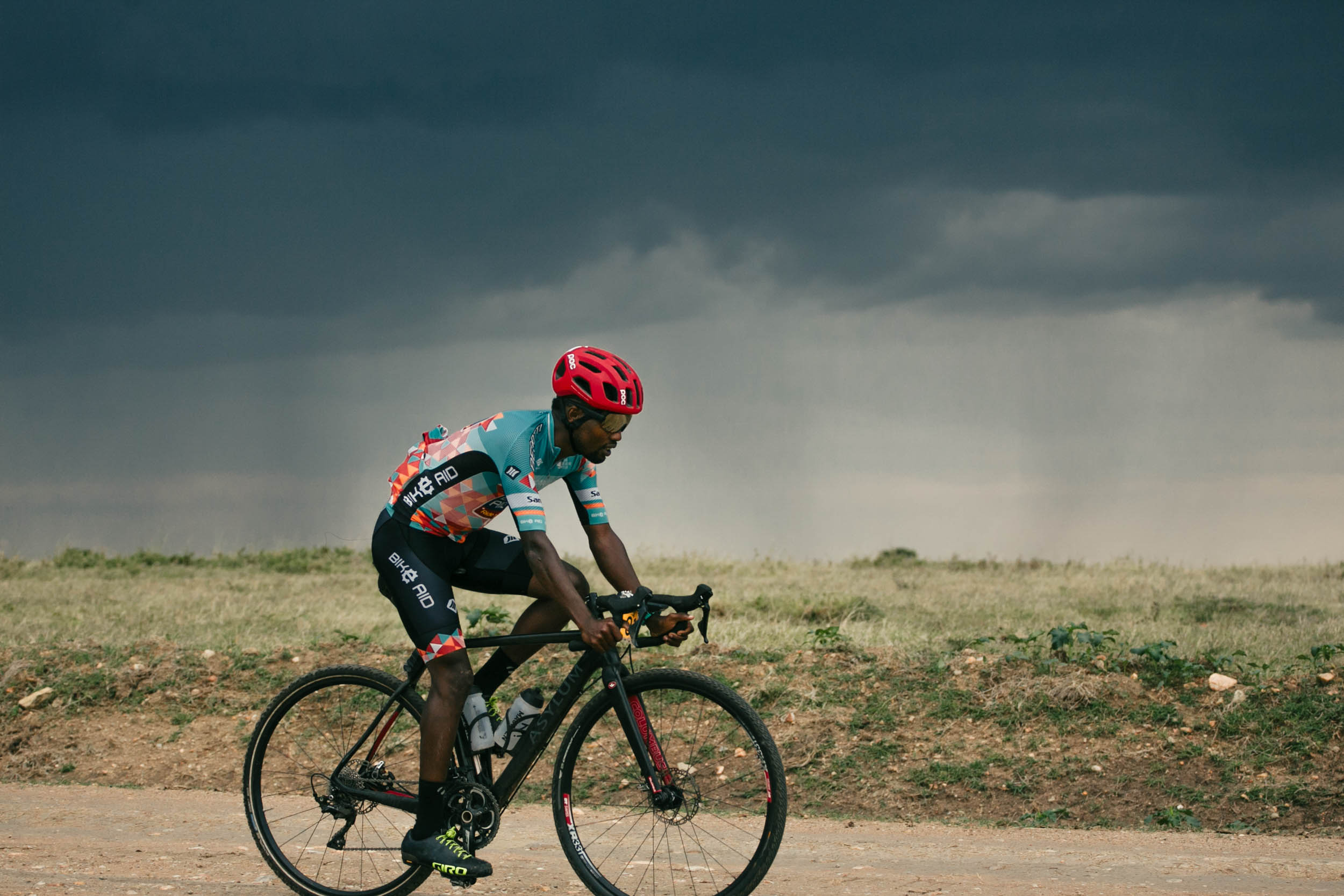
What is the Migration Gravel Race?
Mikel: The Migration Gravel Race (MGR) is a four-day gravel stage race in the Kenyan Maasai Mara National Reserve that will take place on June 23-26, 2021. It’s about 650 kilometers with 8,000 meters of climbing through one of the most beautiful areas in the world. The name comes from the fact that the race is planned during the annual migration of the wildebeests. That’s also the main reason why we made it a stage race. As we’re traversing an area that is home to a huge amount of wildlife, it would be too dangerous to ride at night. But that’s also the beauty of it: riding through an amazing landscape and passing wildebeests, zebras, giraffes, antelopes. It’s mind blowing.
Sule: It is. We just did a full recce of the race, fast-paced and with all the logistics in play that we will need for the official event. Even if we were pushing hard and the terrain and elements were really tough at times, it was still amazing to be riding those landscapes and seeing the wildlife.
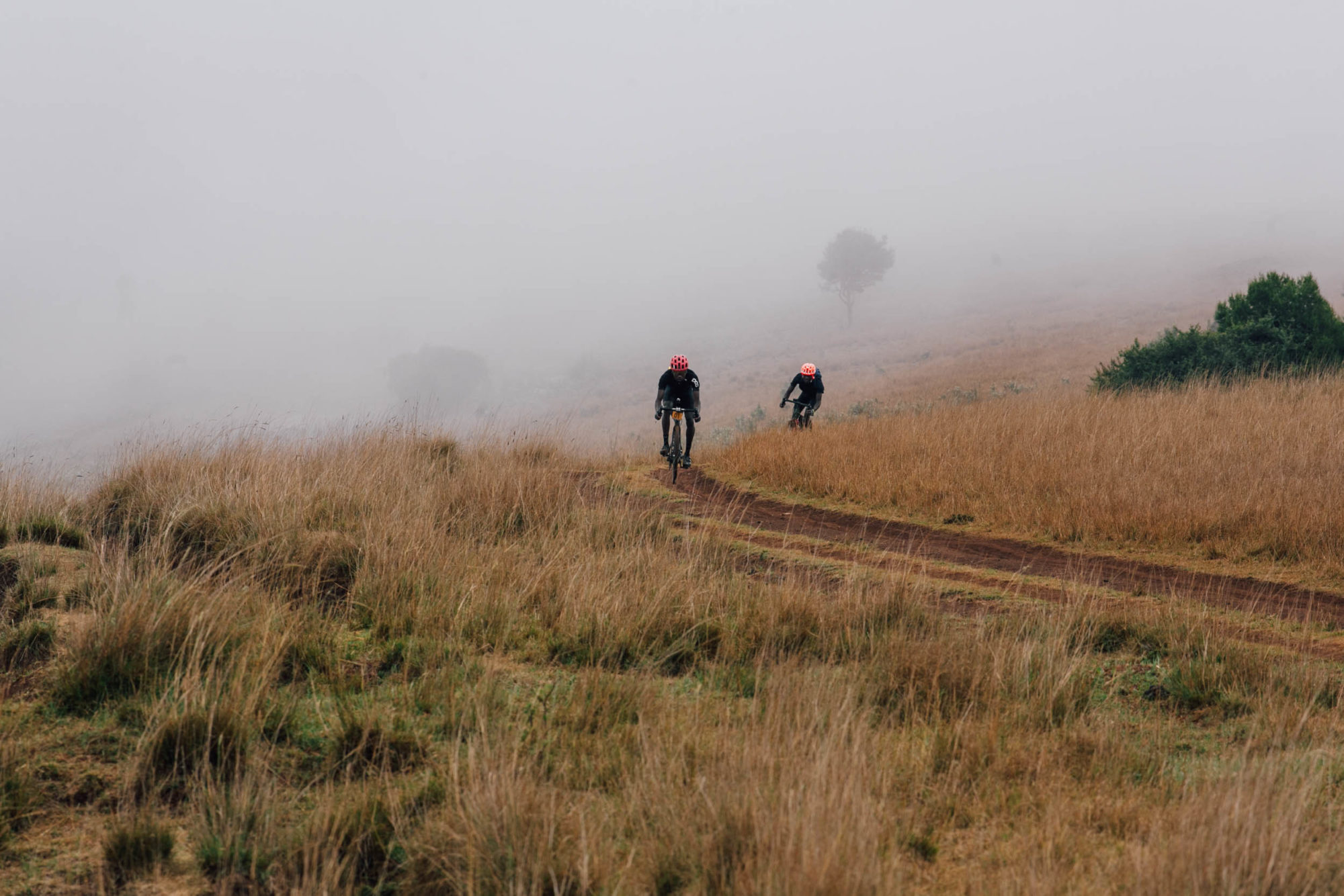
The race isn’t a standalone project. Can you tell us about the initiative behind it?
Mikel: The Migration Gravel Race is the third prong of our Team AMANI initiative, aimed at trying to move the dial on inclusivity in the sport by creating race opportunities for East African riders, explicitly in collaboration with local partners.
The principal reason why the Team AMANI initiative came about was due to a conversation I had with some of the Kenyan Riders last year. I’ve spent a lot of time in East African countries over the years, due to my job as a lawyer at the International Criminal Court in The Hague. Because cycling is my personal passion, I got in touch with the local cycling community and also got to understand the current cycling infrastructure–or lack thereof–a bit better. Speaking with people like Sule and Simon Blake of the Kenyan Riders, it became obvious that two of the main hurdles for riders to get to the pro continental level (and beyond) are the limited options for local riders to compete on an international level and the unstable financial footing of their local development teams.
So, that’s what we decided to focus on: looking for ways to shore up the financial model, make it more sustainable, and more firmly under the Kenyan Riders’ control. Cycling business models are never stable but even less so in East Africa. At the same time, we want to create more opportunities for East African talent to compete on a global scale.
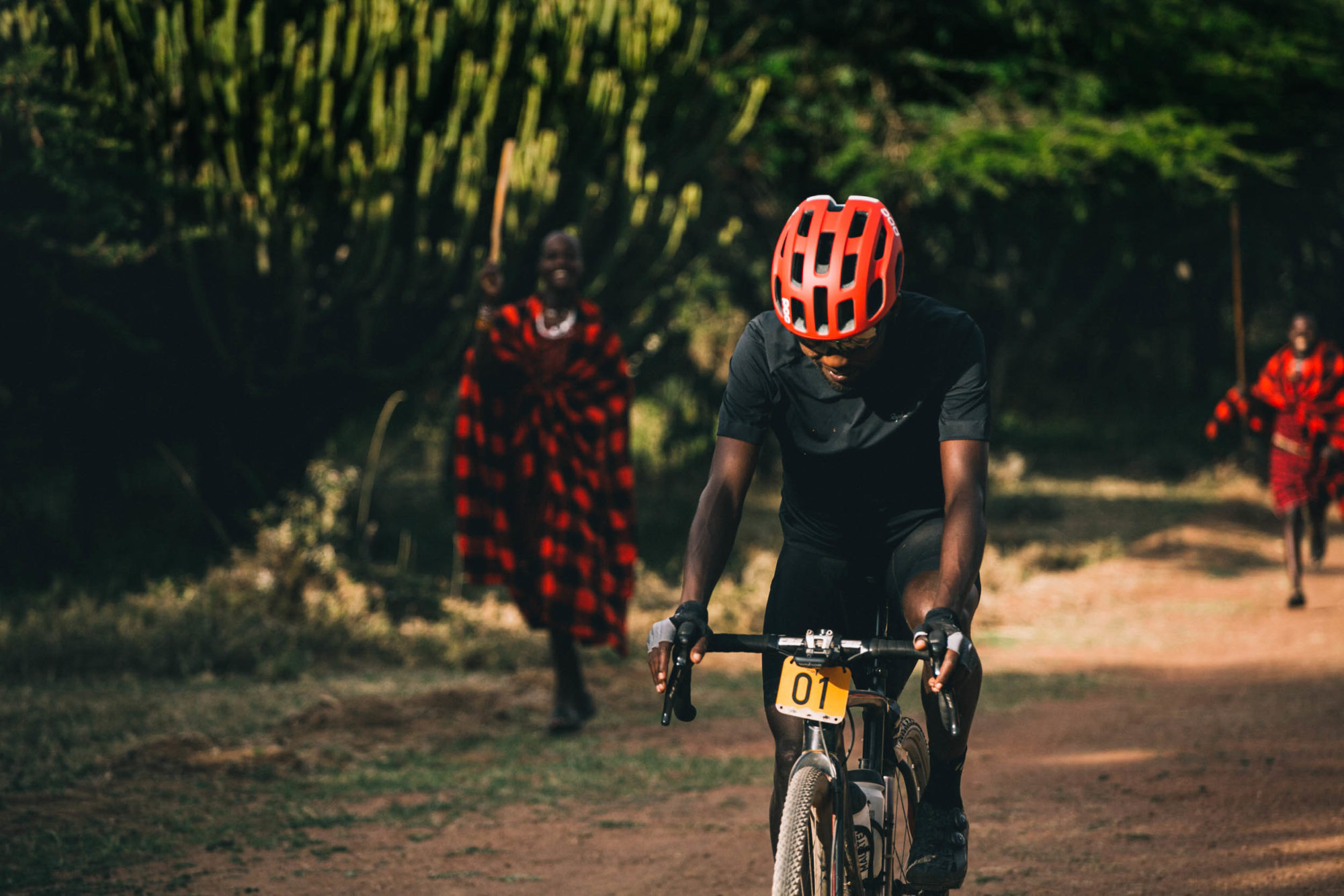
Sule: By putting on this race, we also aim to bring an international field of competitors to the country, instead of the other way around. This way, we’re creating more options for Kenyans to really shine on an international level but in our home country, for our home crowd.
As a leading athlete in Kenya, that’s of huge importance to me. It makes way more sense to bring racing to the country, instead of bringing a few riders to Europe, which usually comes with an enormous amount of pressure. Both from the people at home who want you to succeed, but also from the team’s perspective: contracting a rider from a country like Kenya is way more of a hassle. Think visas, language barriers, cultural differences, not having that upbringing in the traditional European club circuit; it’s a lot to take on for any rider from abroad.
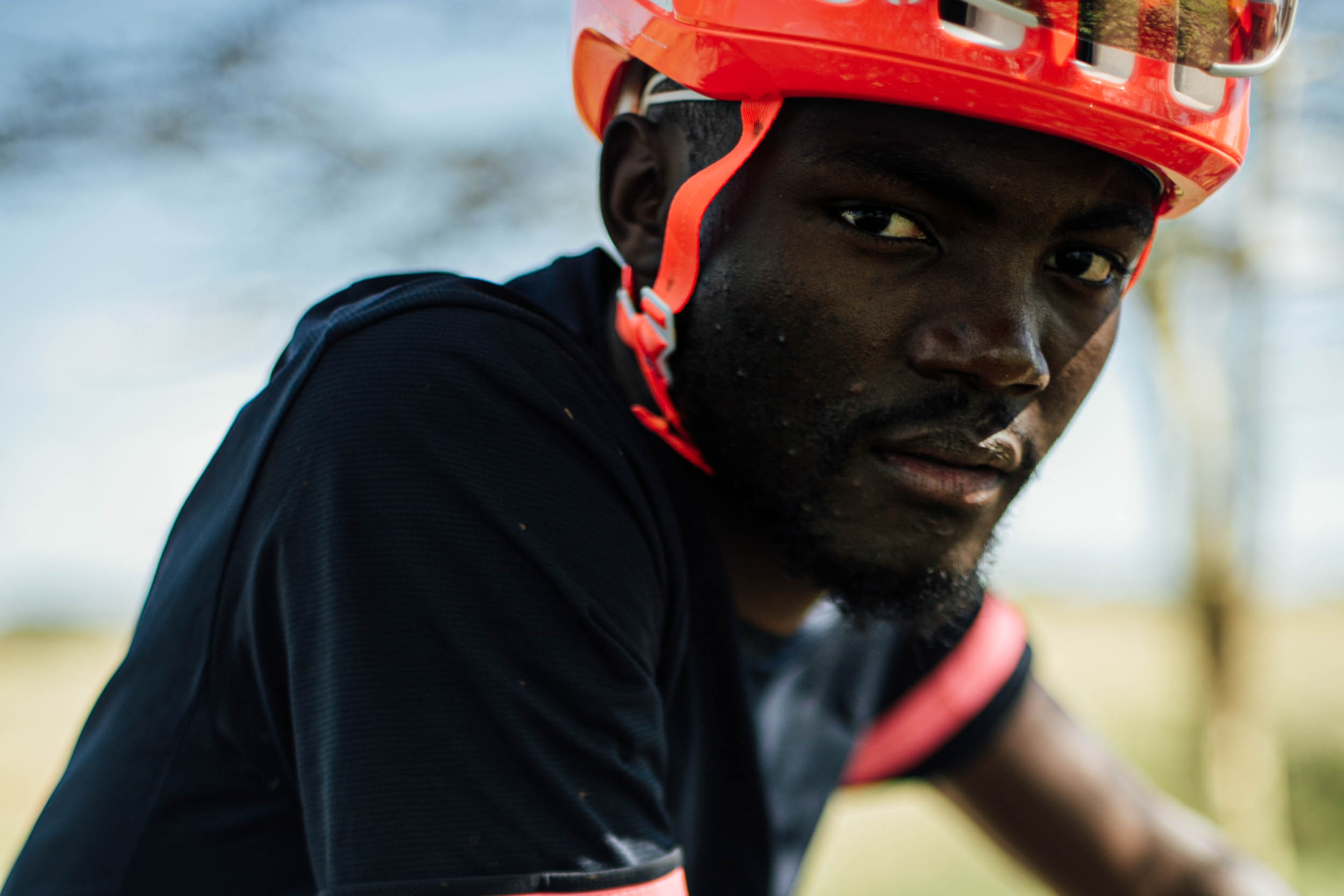
Is there an existing gravel scene in Kenya?
Sule: Not as of yet. We are a runner’s country. It’s what we grow up with; seeing the top runners performing on such a high level, and aspiring to be like them. But there is a growing awareness around cycling and people are starting to like it more and more. Especially mountain biking, as it’s a lot safer.
Because we don’t have a cycling culture, drivers aren’t used to us yet. Moving off road and onto gravel will be a huge win. That is why I think gravel will have a big future in Kenya. And of course, riding off-road is just so much more beautiful.
That’s another aspect of this race: it’s a great way to show off the richness of Africa as a gravel destination. The country has such a diverse and widespread network of gravel roads. As far as races go, the focus here in East Africa is mainly on road races. There is a little bit of MTB racing going on, and the biggest race in the area is of course the Tour of Rwanda road race. These races are popular but haven’t proved sustainable so far. They could disappear at any time. The biggest problem is to get funding on a structural level. To get there, we need more visibility for the sport of cycling.
Helping grow that cycling culture is my main role in this project, both from an African perspective and a rider’s perspective. In Kenya, I am seen as a leader. There are a lot of cyclists who look up to me and compare themselves to me. I serve as an example in that perspective, and I am happy to fulfill that role. If Kenyans see this sport growing and can aspire to become like one of the athletes they look up to–and make a living doing so–it will help build that culture from the ground up. But this needs a lot of engaged stakeholders in the country. I definitely want to try to play a part in realizing that.
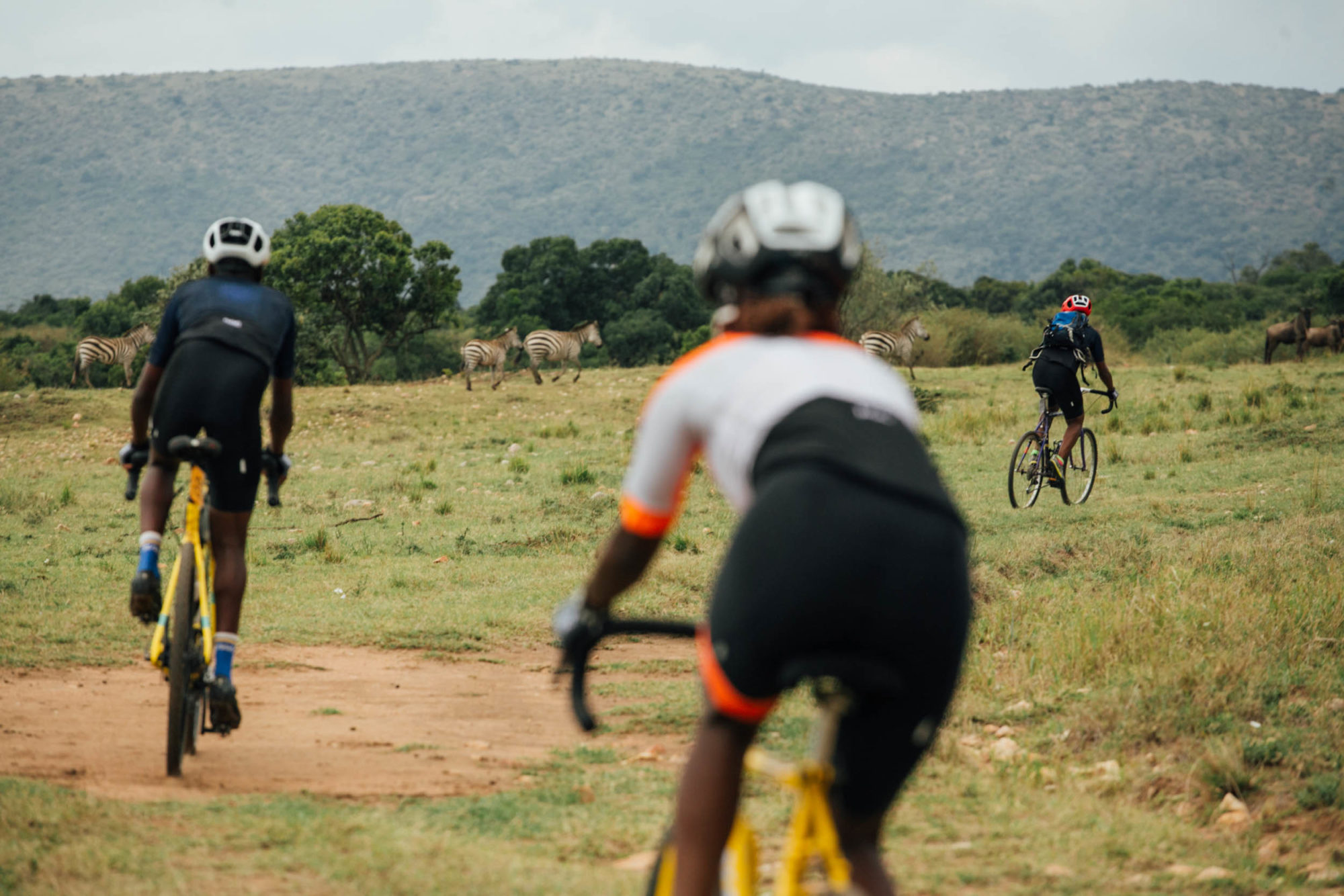
One idea that came out of the recce, and I’ve already started working on it, is to organize a series of gravel races in different nature reserves around Kenya, leading up to the main event. It’s a way of engaging more Kenyan cyclists in cycling in general, and gravel riding in particular, and underlining the fun of exploring your country off-road. We can also use these races to look for serious talent that we can offer a spot on the main event. Bringing these races to rural areas might inspire young boys and girls to aspire a different kind of future.
That is exactly how it started with me: I was about 17 when I saw a Black Mamba race for the first time [simple steel bikes used for transportation across Kenya and other African countries]. After entering my first race the next week, I was hooked. And it all went from there. For this gravel series, I therefore also want to have a Black Mamba category for under 20, so everyone gets a shot at showing off their talent, no matter what bike they are on.
Mikel: That said, it will still be important to bring promising East African riders to Europe, or in the case of gravel racing, to the US. It’s where the main competition is taking place and where you can really measure yourself against the best. We don’t want to reproduce the model of teams like BikeAid, they are already doing a great job at that (in the road scene). We’re looking just below that–creating opportunities for promising young talent to develop the skills necessary for professional cycling, on or off-road. We sometimes forget that moving to a new continent and being expected to immediately perform at your best can be a daunting prospect. If we can offer young riders a bit of a softer landing coming into Europe, pairing them up with the Dutch teammates committed to showing them the ropes both on and off the bike, then we can hopefully lower the attrition rate and enable these riders to be better prepared for when they do get called up to the pro continental or World Tour level. It’s obviously a long game and we don’t pretend to have all the answers. We just want to be good listeners, respond where we can to what is needed, and to act as a bridge wherever possible.

You’re also using e-racing as a tool. How does that work, exactly?
Mikel: E-racing is the final prong of the Team AMANI project, one that actually materialized out of necessity during COVID-19. It ticks a lot of boxes for us. Instead of bringing just a few promising East African riders to Europe for short racing blocs, e-racing potentially offers a global race platform for entire teams at a fraction of the cost. It also offers standardized methods of testing and training that should help spot and develop the next generation of East African cyclists.
Through our partnerships with Wahoo and Zwift, we’re now outfitting our sister clubhouses in Kenya, Uganda, and Rwanda with smart trainers and e-racing licenses. We’ve also got a weekly “social” event every Thursday night led by Team AMANI that we hope will serve as a networking platform for riders across the African continent to meet and compete with each other. With approximately 400 international riders joining per week during the month of November, the initiative is off to a good start.
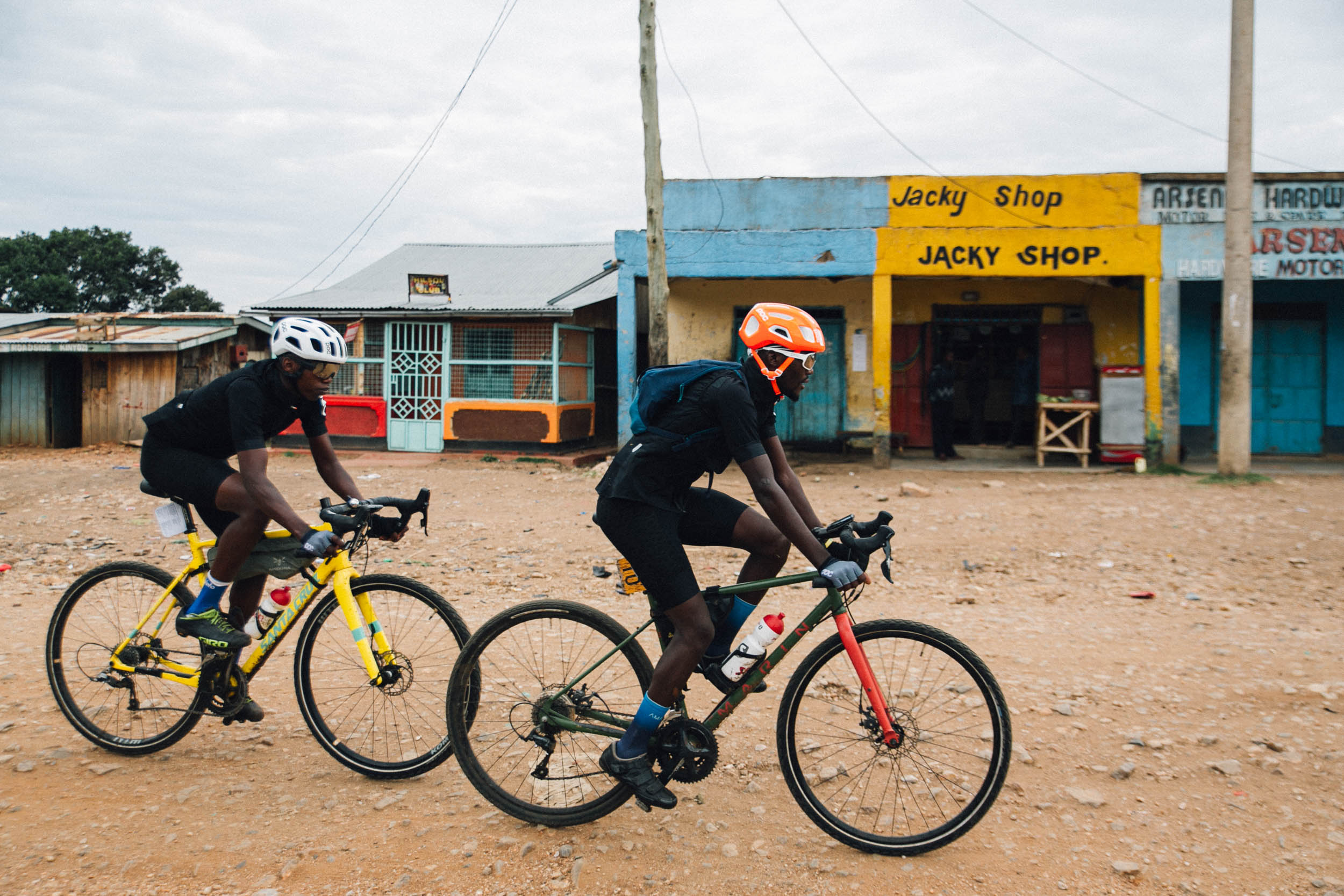
Back to the Migration Gravel race: who is it for and what can people expect?
Sule: It would be ideal to see the top names of gravel in the world come to the race, and we’ve already seen some serious interest and a few confirmations, possible travel restrictions aside. It would be such an amazing opportunity for Kenyan talent to see for themselves how fast these guys (and girls) are, and not just to hear of it. It’s that simple: until you get bitten, you don’t know if you are tough enough. We are aiming for one third of the contestants to be from East African countries. My hopes are that Kenyan riders, including myself, can rub shoulders with some of the best gravel riders around.
Mikel: Don’t expect a bike safari. While the underlying goals are very important to us, this race is first and foremost designed to be competitive. We hope to welcome the best in gravel racing, although that doesn’t exclude serious amateurs. As long as you are here to race and have done the necessary preparation, this is for you.
Riding the recce confirmed it for me: it’s going to be a tough race. You definitely should take it seriously. The varying circumstances, the weather, the altitude, mud, bike issues; everything piles up into one enormous physical and emotional experience. One you’ll never forget. What I found amazing was the interaction with the local communities. And the unbelievable landscape, of course: such variety. Endless plains, mountainous areas, and that wildlife; no stage is the same!
Sule: I think it will be something that will stay with you for a long time to come. It throws everything at you. There were so many challenges. And the landscapes and wildlife were spectacular, even for me. I might live in Kenya, but I had never visited this area on a bike before. Waking up in a tent and seeing giraffes passing by is something else.
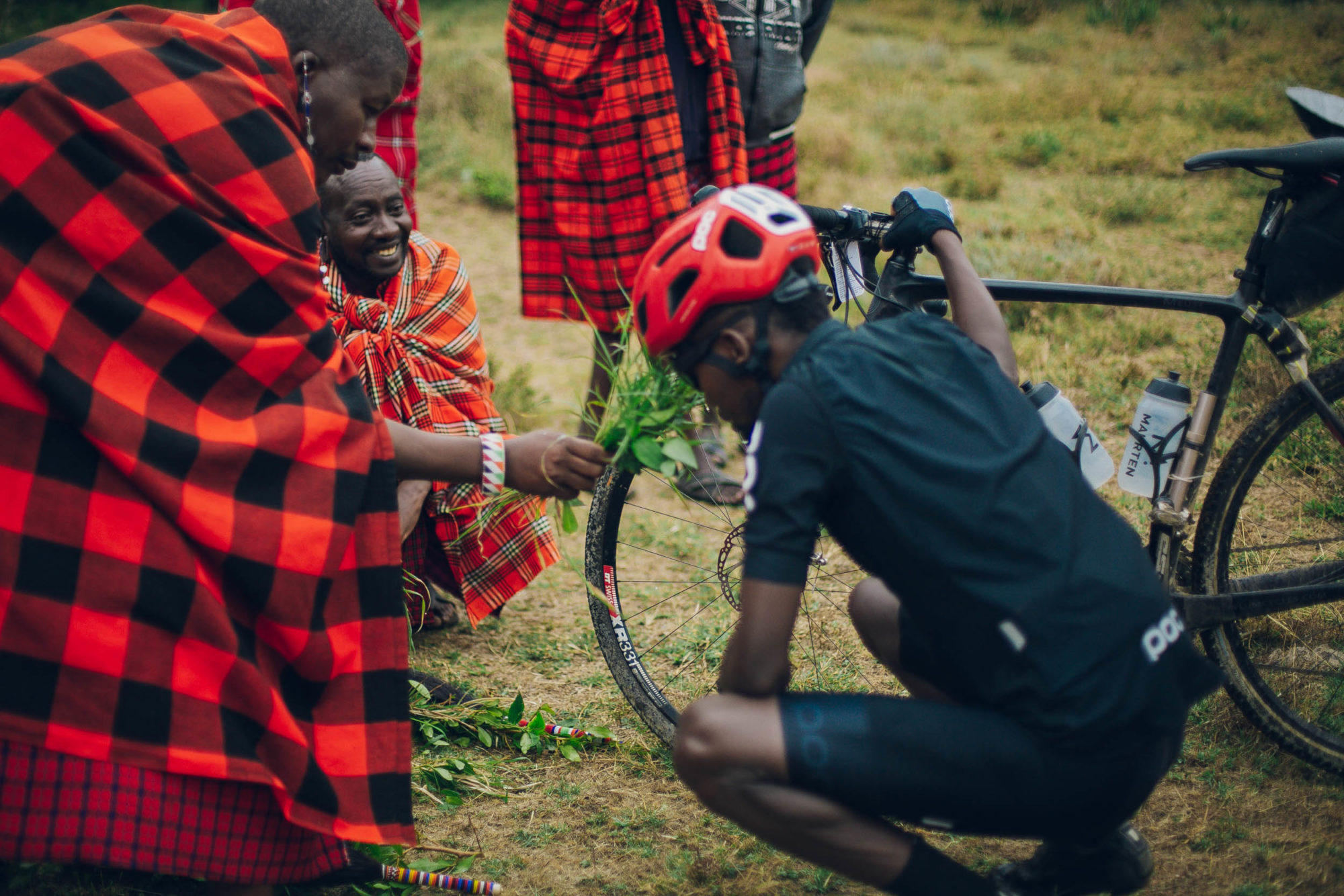
One other unique aspect of the race is the connection with the local Maasai community and their land. How are they involved in this race?
Mikel: We are working closely with the local community, and our partners on the ground have been working with the Maasai in that area since forever. It was pretty cool to see the enthusiasm on both sides. We were privileged to have one of the local Maasai chiefs riding ahead of us on a motorbike, communicating our route to all landowners so that they knew we were coming. We also employed local Maasai to help with resupplies and guarding the camps at night (from unwanted, four-legged intruders). Revenue from the race needs to trickle down to the Kenyans themselves. That’s a key part of the whole strategy.
I’ve been thinking a lot about the relationship between the MGR, the local community, and the surrounding environment since returning from the dusty plains of the Maasai Mara National Reserve. What struck me was the delicate balance between conservation and local land use. Riding through an area as pristine as the Maasai Mara, you can clearly see the impact of humans on the land. As an example, fences that weren’t there when the route was first scouted a few months back had been erected in a way that obstructs the migratory patterns of wildlife (as evidenced by the many wildebeest carcasses we passed on the route). A foreign observer’s initial reaction will likely be that these fences should be taken down immediately.
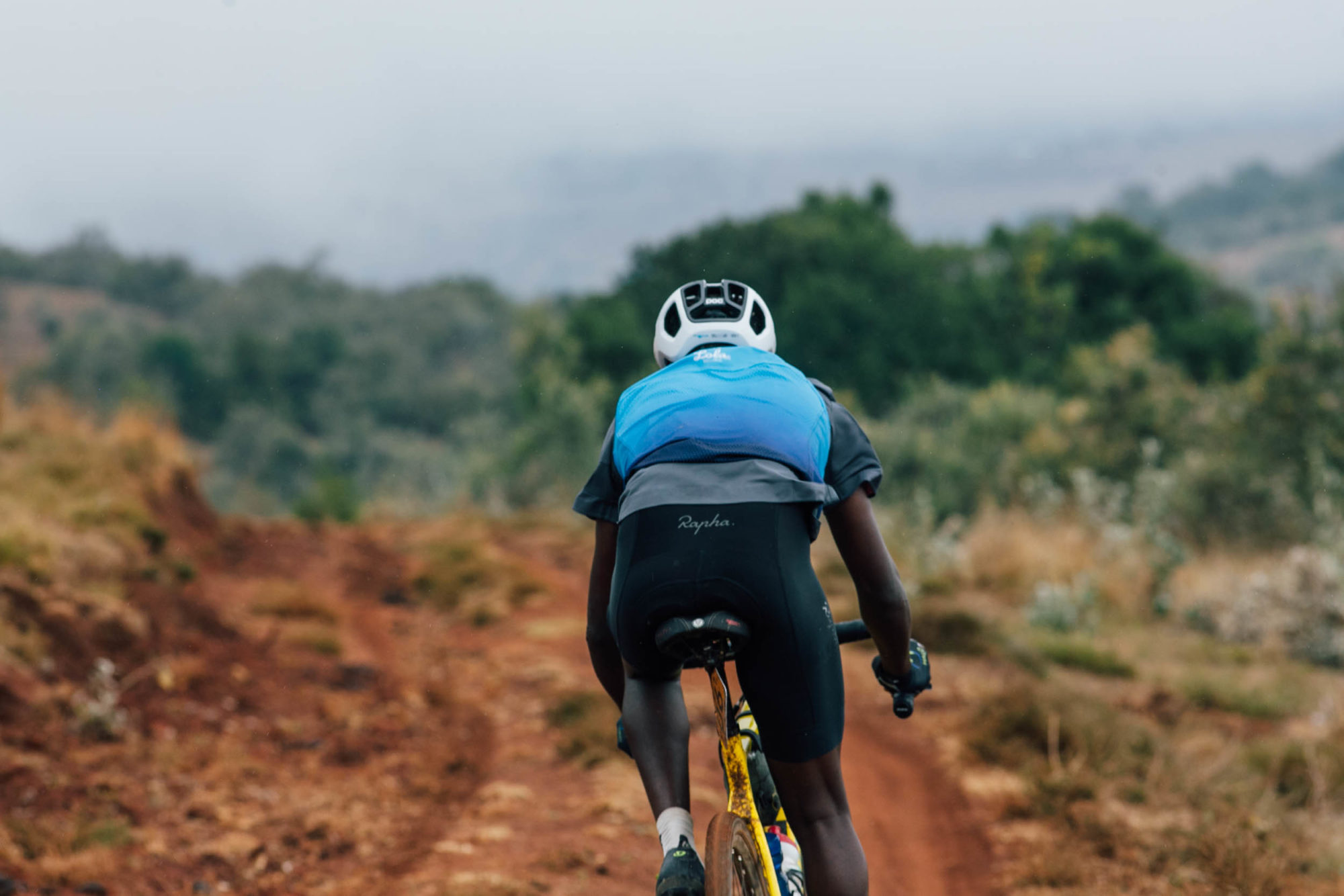
But if you take a closer look at how land was set aside for conservation in Kenya (largely during the colonial period) and who is benefiting from the tourism dollars generated from that land, it clearly favors the elites and those whose landholdings remain from the colonial period. As a consequence, “conservation” is something of a dirty word among certain factions of the local population. Just another tool to dispossess the historic custodians of the land. Being concerned with the welfare of wild animals is only one side of the coin. It’s a fair counter-question to ask, “Why should I take down these fences if wild animals threaten my only form of income? Are these animals’ lives more important than my children’s lives?”

Bringing this issue back to the MGR: as cyclists and outdoor enthusiasts, we have a responsibility to show the rightful owners of this land the intrinsic economic value of undeveloped land. Without wanting to overstate the impact of a four-day race, our aim is to use this event as a tool to demonstrate that undeveloped land can be a meaningful source of income for local communities. From our perspective, including local communities in the bounty of tourism revenue is the only way to sustainably incentivize the preservation of the land and wildlife. The time for one-off donations to appease our collective guilty consciences is passed. The future of conservation lies in making local communities key stakeholders in the process. If we want to continue enjoying these unspoiled vistas, we need to put our money where our values are. We hope this is just the beginning of this conversation in Kenya.
Sule: I really stand behind that and I think that it can work. I’ve seen it also with other pacts in Kenya. Approaching this longtime issue in this way makes a lot of sense. And I hope over time, we can look back and be very proud of what we are putting up here. I realize that these are big ambitions, but that’s what we need to make this a success. And thinking big has brought me to where I am as a cyclist today. My ambitions for the race? That’s simple. To win it.
Registration for the 2021 Migration Gravel Race opens on December 15th, 2020. Learn more at MigrationGravelRace.com and on Instagram @migrationgravelrace. You can find out more about Team AMANI at TeamAMANI.com.
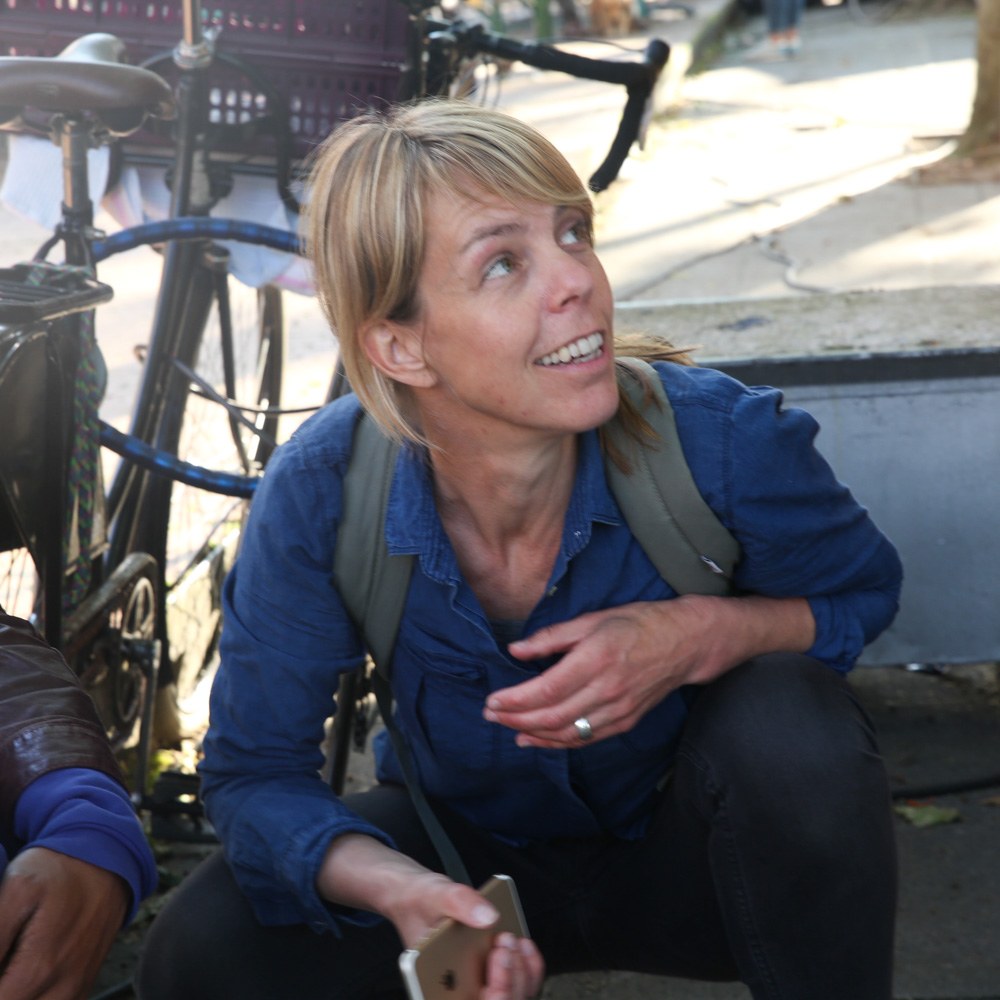
About Lian van Leeuwen
Lian van Leeuwen is a Rotterdam-based photographer and writer. She covers endurance bike races like Silk Road Mountain Race and the Transcontinental Race, which usually make her just want to ride her bike herself. She is also the founder of Shift Cycling Culture, which addresses the environmental impact of cycling. Follow along on Instagram @saltlake_lian and @shiftcyclingculture.
Please keep the conversation civil, constructive, and inclusive, or your comment will be removed.












